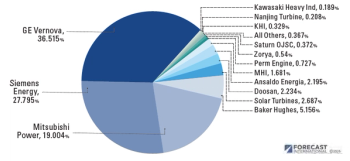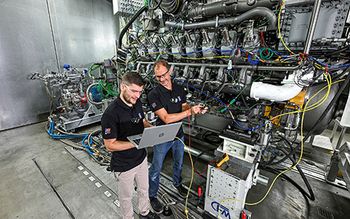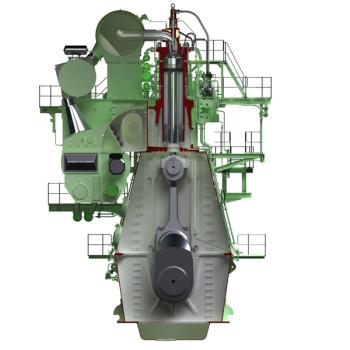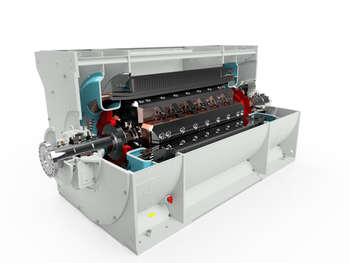
- Handbook 2023
- Volume 63
Myth Busters: Impellers Should Be a Single Piece
The current trend in manufacturing is toward single-piece manufacturing. However, in many cases, there is no justifiable reason or logic behind this.
During a recent international turbomachinery conference, I participated in an interesting discussion about compressor impeller manufacturing. One of the participants confidently pronounced that three-piece and two-piece impeller manufacturing was outdated and should not be used anymore. The implication was that all compressor impellers must be manufactured as a single piece. I asked the basic question “Why?” to which neither he nor any of my other expert colleagues were able to give a satisfactory answer. The current trend in manufacturing is clearly toward single-piece manufacturing. However, in many cases, there is no justifiable reason or logic behind this.
Before getting into this discussion, some background information is warranted on how compressor impellers are currently manufactured. Industrial centrifugal compressors use fairly standardized casing, sealing, and rotor support elements, but their internal flow path must be customized for a specific application. To accomplish this, the compressor manufacturer usually develops families of impellers that are optimized for certain head and flow ranges. Some manufacturers will further scale, crop, or otherwise adjust the base designs. So, what are the current processes for manufacturing and assembling compressor impellers?
The key components of an impeller are the hub, the shroud, and the blades which, when assembled, are mounted on the compressor shaft or form part of the shaft. These components can be fabricated either in individual pieces or as single, two, or three-piece assemblies using:
1. Machining (2D or 3D) from multi-axis milling, drilling, or turning. The most advanced is 5-axis machining which allows for the fabrication of complex shapes using subtractive manufacturing for almost all commonly used construction metals.
2. Electrical Discharge Machining (EDM), which is a newer subtractive technology that is relatively slow and expensive but highly accurate. It produces accurate representations of a desired impeller geometry and can be used for most metals.
3. Conventional casting which requires a carefully executed molten metal pouring and cooldown process. Casting methods allow an efficient production of identical impellers.
4. Investment casting, a highly accurate process that produces quality individual impellers or components. It is seldom used for very large pieces.
5. Additive manufacturing (AM) is a newer class of fabrication techniques based on building up geometries using small quantities of directionally layered materials to achieve a desired shape. The most common, commercially available AM method for printing metal compressor impellers is laser metal sintering using a metal powder bed. Here, a laser acts as a localized heat source to melt and fuse metal powder into a desired 3D shape using sequentially layered metal powder. AM has shown promise for the manufacturing of smaller impellers. But most commercially available AM machines are limited in size and cannot handle impellers larger than about 20 inches in diameter, have relatively high dimensional tolerances, are limited to the use of a small number of expensive metals, and require post-processing to refine the surface finish. To date, many of the original promises of AM have yet to be realized. There appears no clear path forward to address some of the apparent limitations of this manufacturing technology.
Single-piece impellers are not always possible and are not the answer to everything.
As previously noted, single-piece constructed impellers are either cast, five-axis machined, or (less often) fabricated using EDM or AM. For impellers that are not of single-piece fabrication, they still need to be assembled to achieve the final geometry once individual pieces have been fabricated. Two or three-piece impellers are usually machined and then individual pieces are brazed or welded together. The most common approach is to utilize a two-piece construction where the hub is machined with the blades as one piece and the shroud is welded onto the hub assembly. Older impellers also sometimes used rivets and or even screws to fasten the shroud to the hub. But this is not commonly done for modern 3-D impellers and usually does not provide sufficient strength for highly loaded impeller applications.
How do we decide which fabrication and assembly technique is the most appropriate? They all work and have been demonstrated in thousands of compressor installations worldwide. The ultimate goal is to reproduce the aerodynamic designer’s intended geometry as closely as possible while staying within the required structural strength and dynamic fatigue limits and keeping fabrication costs reasonable. This is especially true for modern, complex geometry 3D impellers. Significant aerodynamic design improvements due to advanced CFD and FEA tools have changed the shape of impellers from traditional, simple 2D to highly flow-shaped, curved 3D geometries. The move from 2D to 3D compressor impeller geometries happened in parallel with a slow industry transition from two or three-piece construction to single-piece construction.
Single-piece impellers can often handle higher stress loads than two-piece impellers and may also reduce the potential for fabrication quality flaws. However, some shapes are difficult to machine as a single piece using 5-axis or EDM since these manufacturing tools require a line of sight access into all sections of the internal geometry. Obviously, a clear line of sight internal access is not always possible for impellers that are highly backswept, have long inducer sections, curved splitter blades, or use other highly three-dimensional geometry features. In this case, the only alternative is multi-piece fabrication, casting, or AM. Casting is expensive for one-off manufacturing and, as previously discussed, AM has severe limitations in size, tolerance, surface, and available materials. Thus, welding or brazing of two or three machined pieces is very often required.
It is not fair to simply malign multi-piece impeller construction. This type of compressor fabrication has been utilized for nearly 100 years and there is a wealth of industry experience and technology available to assure that it is performed without affecting the integrity of the impeller. The vast majority of all closed-compressor impellers in the world utilize welded or brazed two-piece construction. Reputable compressor manufacturers have tightly controlled quality and inspection programs to ensure that the welding or brazing fabrication process meets rigorous industry standards and that the final product easily handles the strength and fatigue requirements of the compression application.
PROS AND CONS
Clearly, there are advantages for single-piece impellers from a stress design optimization. In particular, AM as well as 5-axis milling or casting allow for the optimization of geometry for either stress or aerodynamic performance. But single-piece impellers are not always possible and are not the answer to everything.
Single-piece impellers can be expensive and are more difficult to inspect for internal defects. AM is pricey and limits the types of metals that can be used. EDM is slow and expensive but accurate. 5-axis milling works best for high-flow impellers, and may not be feasible for low-flow impellers. Casting is only inexpensive if done for multiple identical impellers but requires a well-established inspection and quality control process. Two or three-piece impeller welded construction requires highly trained welders and inspectors, and two-piece brazing imposes size limitations.
Thus, there are pros and cons to each approach. There is no one-fit answer. All impeller fabrication and assembly methods can be appropriate and should be considered when designing and manufacturing a new impeller. Single-piece impellers are great but are not always the best answer for all compressor impeller designs. All methods have a place in the market. There should be no oversimplified, reflexive, unsubstantiated prejudices against any impeller manufacturing method or assembly methods. ■
Klaus Brun is the Director of R&D at Elliott Group. He is also the past Chair of the Board of Directors of the ASME International Gas Turbine Institute and the IGTI Oil & Gas applications committee.
Rainer Kurz is the Manager of Gas Compressor Engineering at Solar Turbines Incorporated in San Diego, CA. He is an ASME Fellow since 2003 and the past chair of the IGTI Oil and Gas Applications Committee.
Articles in this issue
over 2 years ago
Turbo Tips: Comparing Compressorsover 2 years ago
QA: GEARBOXES WITH VOITHalmost 3 years ago
VENDOR SPOTLIGHT: EMERSONalmost 3 years ago
Turbo Tour: Siemens Energy Innovation Centeralmost 3 years ago
GAS TURBINE FORECAST 2023almost 3 years ago
U.S. POWER INDUSTRY OUTLOOK 2023about 3 years ago
Handbook 2023Newsletter
Power your knowledge with the latest in turbine technology, engineering advances, and energy solutions—subscribe to Turbomachinery International today.





